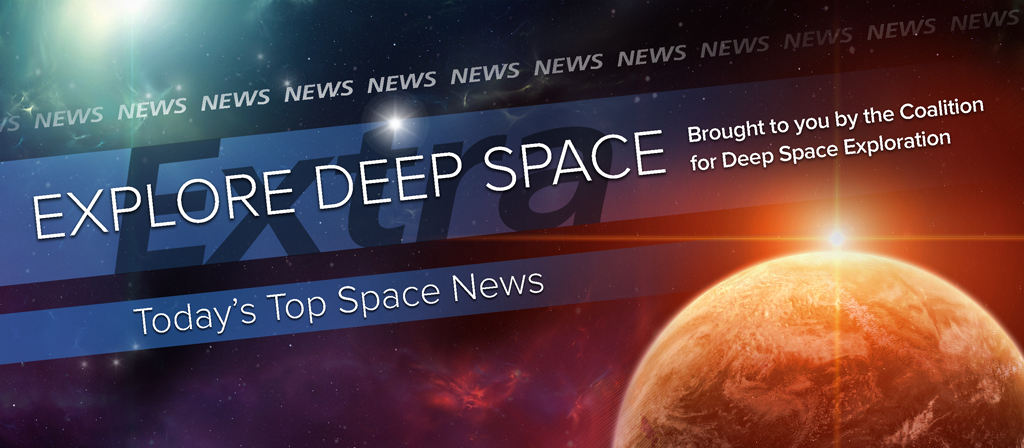Today’s Deep Space Extra offers the latest reporting and commentary on space related activities from across the globe. NASA is uniting scientists and engineers to select the best human landing site on Mars. Robots built and programmed for space may accompany human explorers to Mars. An influential member of NASA’s U.S. Senate appropriations panel works to balance NASA science and exploration spending. Volatile red dwarf stars may be too radioactive for alien life. Europe’s Rosetta mission marks another milestone in its lengthy exploration of the comet 67P/ChuryumovGerasimenko. Russia launches a missile warning satellite. El Nino may be at record strength. International Space Station astronauts expect Zinnia crop in early 2016. SpaceCom brings experts from many fields together to learn of commercial space possibilities. Commercial space legislation on its way to President Obama for signature appears positive for Central Florida.
Human Deep Space Exploration
Where will the 1st astronauts on Mars land?
Space.com (11/17): NASA is already at work in the selection of prospective landing sites for the first humans launched to Mars. The discussions center on a landing site of high science value with access to potential resources that could support their stay.
NASA robots land at MIT and Northeastern
Boston Globe (11/18): NASA’s turns to MIT and Northeastern University for expertise in preparing the R5 Valkyrie robot, with its super human appearance, to work with astronauts during long space missions, including those headed to Mars.
Mikulski vows to balance NASA science and exploration funding
Space News (11/17): U.S. Sen. Barbara Mikulski, ranking member of the Senate appropriations panel with responsibility for NASA’s budget, pledges to balance the agency’s space exploration and science agendas. NASA, like the rest of the U.S. government, is working under a 2015 budget continuing resolution that runs through Dec. 11. The Maryland lawmaker spoke before an audience at Johns Hopkins University earlier this week.
Unmanned Deep Space Exploration
Superflares spell doom for life on ‘habitable’ exoplanet
Discovery.com (11/17): Some planets, like Kepler 438b, seem favorable for biological activity well beyond the solar system. However, this Earth like planet’s red dwarf star is erratic. The explosive nature of the star may mean it’s too radioactive for life to flourish.
Rosetta mission celebrates one year anniversary of comet landing
Spaceflight Insider (11/17): Philae, the lander that accompanied the European Space Agency’s Rosetta spacecraft to the comet 67P/ChuryumovGerasimenko, marked its first anniversary on the surface of the comet earlier this month. Philae accomplished 80 percent of its mission despite a rough landing. Rosetta’s close-up observations of the comet continue.
Low Earth Orbit
First satellite launched for Russia’s new missile warning network
Spaceflightnow.com (11/17): Russia on Tuesday launched the first in a series of missile warning satellites. A Soyuz-2.1b rocket served as the launch vehicle.
El Niño could be the most powerful on record, scientists say
Orlando Sentinel (11/17): The Pacific equatorial atmospheric phenomenon known as El Nino could be at its strongest levels ever. El Nino is considered to have a significant influence on weather and climate.
Astronauts plant flowers in space
USA Today (11/17): A Zinnia crop planted this year aboard the International Space Station should bloom in early 2016 as part of the Veggie experiment, an effort to investigate which plants grow well in space.
Commercial to Low Earth Orbit
SpaceCom explores an industry role in outer space
Houston Chronicle (11/18): SpaceCom, a gathering of experts in aerospace and other professions, opened a three day conference in Houston on Tuesday to explore commercial space opportunities beyond NASA contracting. “If we’re the only customer, we’ll never be successful in what we’re trying to do here today,” NASA Administrator Charles Bolden told 1,500 professionals from energy, medicine and other fields interested in applying breakthroughs in science and technology from space.
Bill’s passage could spur space business on Space Coast
Orlando Sentinel (11/17): Legislation agreed to by the U.S. House and Senate this month could spur new commercial space activity in Central Florida, home to NASA’s Kennedy Space Center.

